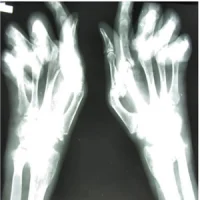According to an article published by JAMA Pediatrics, application of paediatric guidelines for lipid levels for persons 17 to 21 years of age who have elevated LDL-C levels could result in statin treatment for more than 400,000 additional young people than the adult guidelines.
Adolescence is a common time for the emergence of cardiovascular risk factors. However, treatment guidelines of the National Heart, Lung, and Blood Institute, the American College of Cardiology and American Heart Association differ in their recommendations of statin use. That is why there is significant confusion in clinical practice for this particular segment.
Holly C. Gooding, M.D, M.Sc, of Boston Children's Hospital, and colleagues compared the proportion of young people 17 to 21 years of age who meet criteria for pharmacologic treatment of elevated LDL-C levels under paediatric vs adult guidelines. They collected data from the National Health and Nutrition Examination Survey (NHANES) administered from January 1999 to December 2012 and the analysis was performed from June to December 2014. 6338 persons 17 to 21 years of age were included in the analysis.
Under the paediatric guidelines, 2.5 percent of the people included in the analysis would qualify for statin treatment as compared with 0.4 percent under the adult guidelines. If this estimate is extrapolated to the US population of 20.4 million people within this age group, then 483,500 individuals would be eligible for statin treatment under the paediatric guidelines as compared with 78,200 under the adult guidelines. Clearly, the disparate approaches and different guidelines present significant challenges to physicians when it comes to statin therapy.
"Given the current uncertain state of knowledge and conflicting guidelines for treatment of lipid levels among youth aged 17 to 21 years, physicians and patients should engage in shared decision making around the potential benefits, harms, and patient preferences for treatment. The 2013 American College of Cardiology and American Heart Association guidelines recommend shared decision making with patients for whom data are inadequate, including young people with a high lifetime risk for atherosclerotic cardiovascular disease. Patients and clinicians should clearly address other modifiable risk factors, including optimising diet, exercise, and weight and promoting abstinence from tobacco, as strongly recommended by both the paediatric and adult guidelines," the researchers conclude.
Source: JAMA Pediatrcs
Image Credit: Wikimedia Commons










